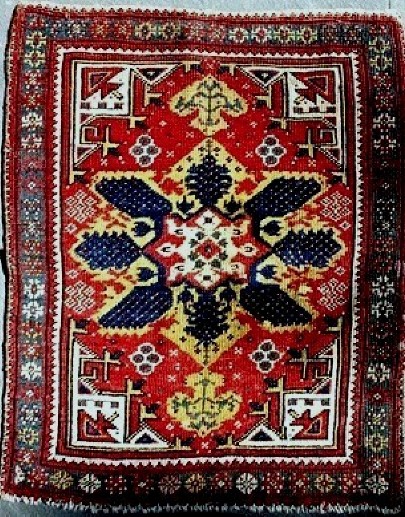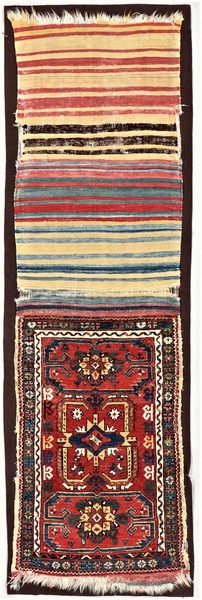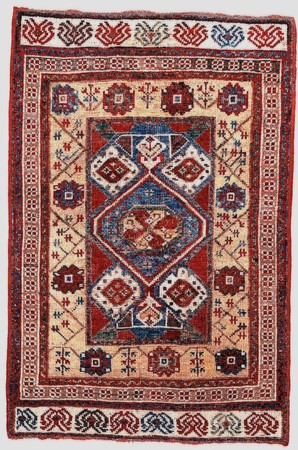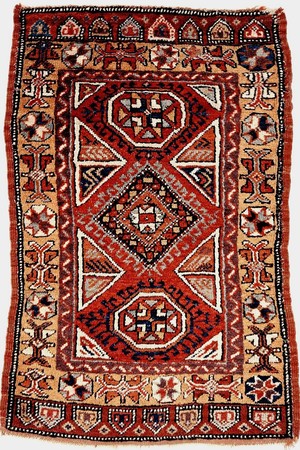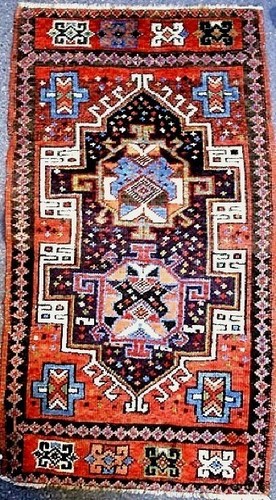4. Anatolian Yastiks -- page 4 of 21
Anatolian Yastiks: The Collection of Dennis Dodds and Zinaida Vaganova
Turkish pile yastiks from the Collection of Dennis Dodds and Zinaida Vaganova. The pieces are from varying regions of Anatolia.
Yastik is the Turkish word for cushion cover. Measuring approximately 2x4 feet, these were placed horizontally, like bolsters, along the back of a divan (another Turkish word) or sofa. Images of yastiks are seen in Ottoman paintings and the court interiors produced and displayed sumptuous examples made of silk velvet and metal brocade. The Maqam Collection focuses on yastiks made in the villages and tribal compounds across all regions of Turkey where they were woven of wool on wool foundations, just like the rugs. Sometimes silk, cotton, and metal highlights were used. Most of the pieces in the collection were woven in the 18th and 19th century, with some notable and particularly unusual examples from the early 20th century. Following are only a few images from the total of 45 yastiks in the collection. The yastik below is nearly identical to one in the Joseph McMullan Collection in the Metropolitan Museum of Art, New York, and the design is directly derived from Ottoman silk velvet yastiks of the 17th century.
